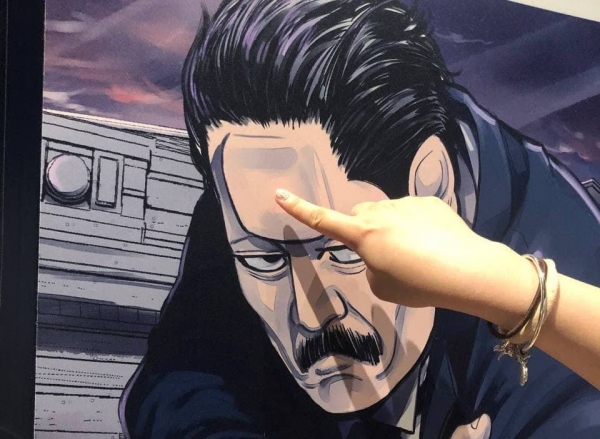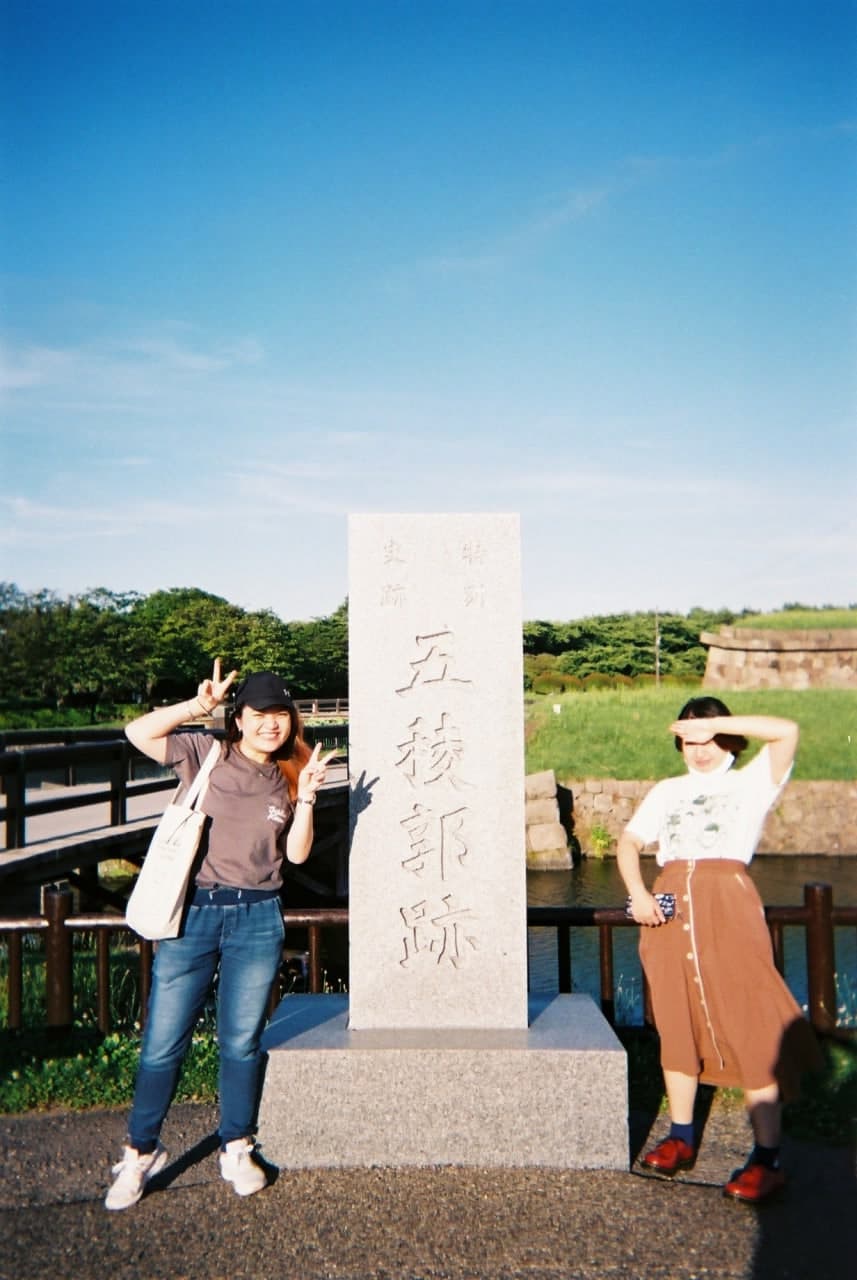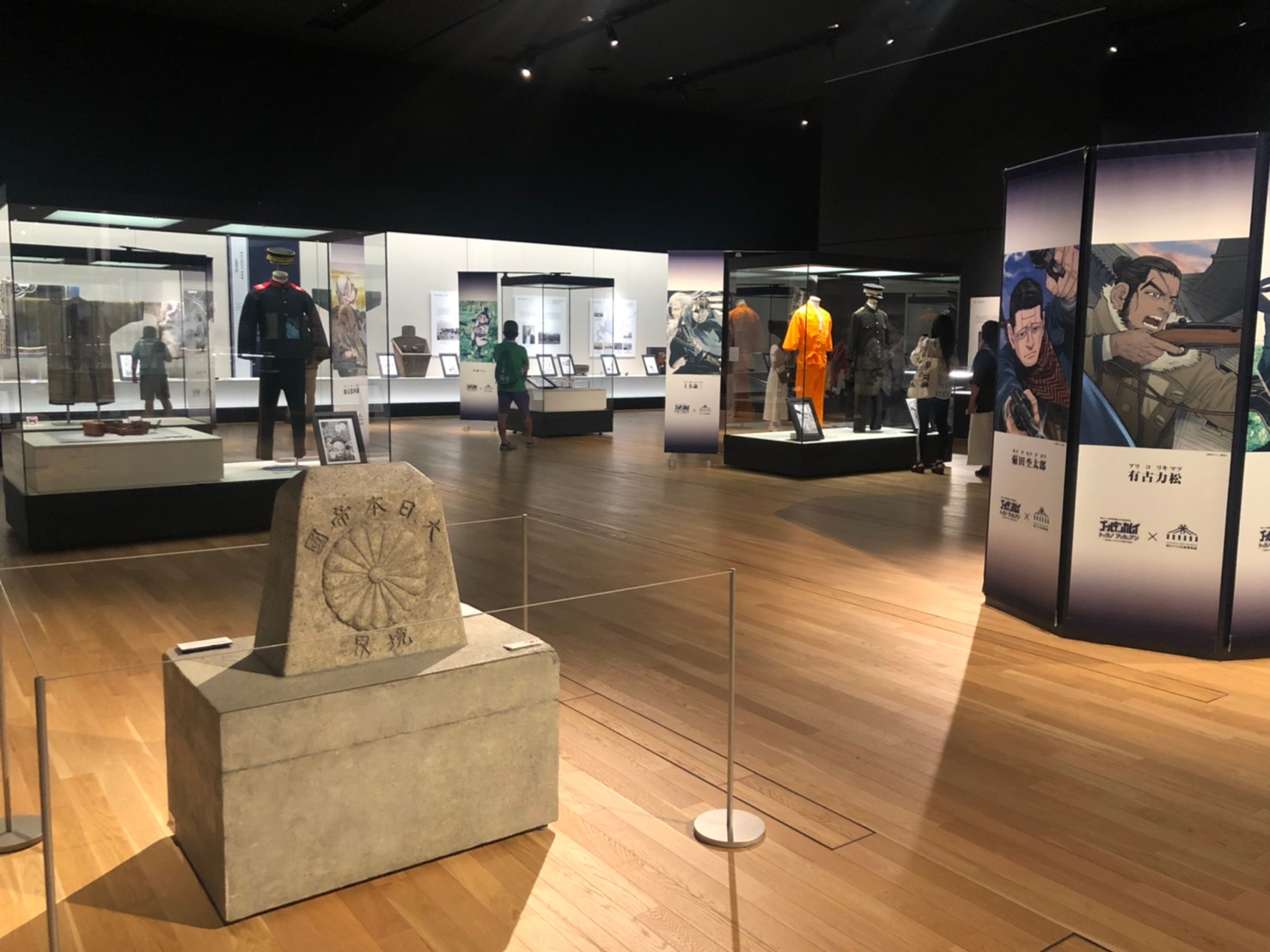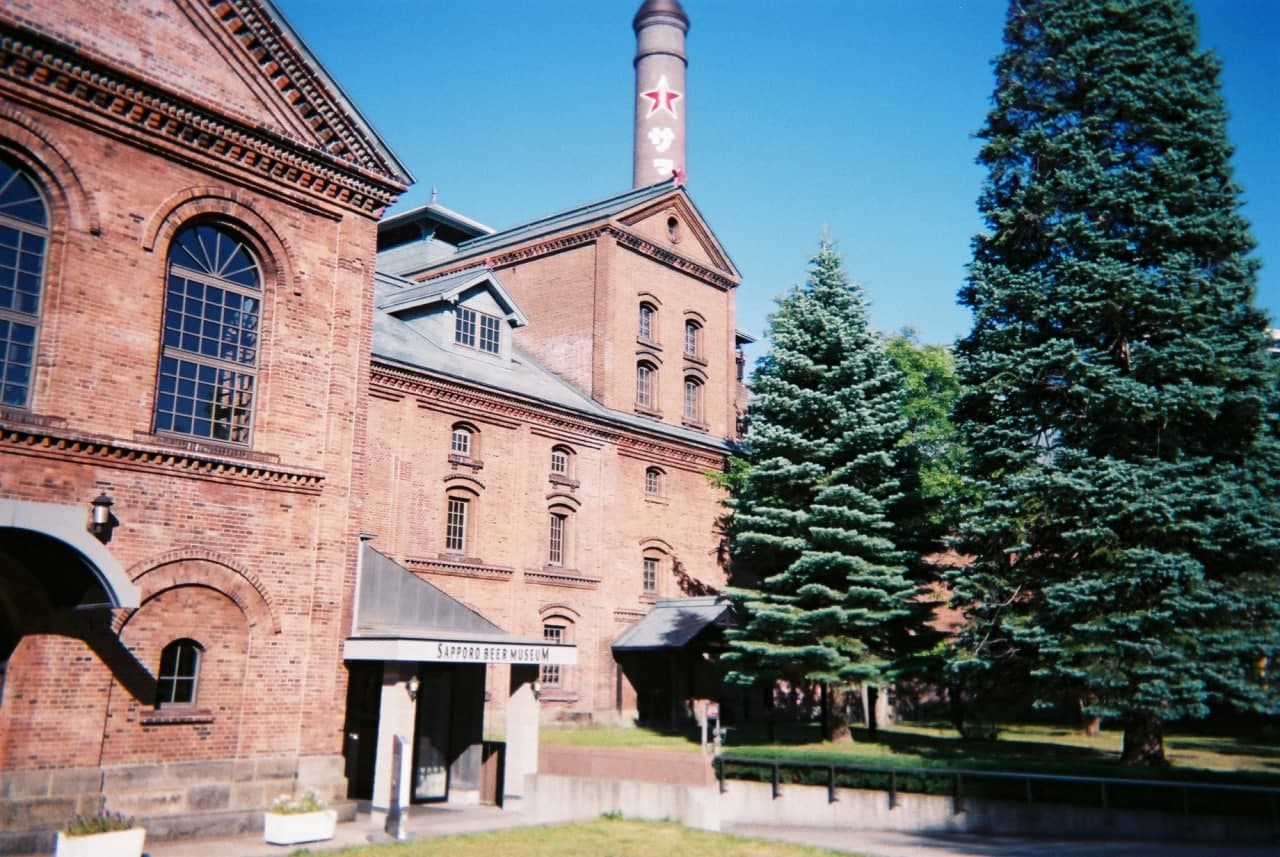Going for gold: A 7-day Golden Kamuy-themed road trip across Hokkaido (Part 1)

Fans of Japanese pop culture and seinen manga, in particular, may have heard of a series that has become more popular in recent months—Golden Kamuy (ゴールデンカムイ). Set after the Russo-Japanese war (1904-1905) in Hokkaido (北海道), Japan’s northernmost island, Golden Kamuy follows Sugimoto Saichi (杉元佐一), a veteran of the infamous Battle of 203 Hill, on his journey to find a hidden cache of Ainu (アィヌ) gold with Asirpa (アシリパ), a young Ainu girl who saved his life from a bear attack. The catch is this: the map leading to the gold has been tattooed on 24 different convicts from Abashiri Prison who have since escaped. As Sugimoto and Asirpa journey across Hokkaido in search of these convicts, they quickly run into the 7th Division, the Hokkaido-based arm of the Japanese military—including First Lieutenant Tsurumi Tokushirō (鶴見篤四郎), who wants to use the gold to establish an independent military Hokkaido with his men.
Aside from being an absolute ride from start to finish, this series also introduces Hokkaido, Ainu culture, and the political history of the region in an exciting and engaging way, and has consequently been sort of informally adopted as their prefectural franchise.
I was introduced to this series by my friend Bonnie, who first mentioned it to me while we were out in town in late December 2020. She had described it as a “niche anime” about “the Russo-Japanese war and politics”, and I vaguely remember thinking, cool, but it doesn’t seem like something I’d get into. Reader, I was an absolute FOOL.

The beginning of my downward descent into the swamp. (Image credit: Hui Lin)
Long story short, 1 episode turned into 2 and then into 36 (plus 4 OVA episodes), and I now love this series to the point where we ended up planning a Golden Kamuy trip—a pilgrimage, you might say—to Hokkaido this summer to visit some of the main plot-relevant locations. We were hoping that the Golden Kamuy Stamp Rally would be on while we were there, but we were unfortunately a touch too early and missed this year’s AR tourism campaign. Much of this trip was made possible by Yijia, our wonderful, glowing, super competent Goddess of the Car, who drove up so that we could road trip our way from coast to coast in a week! I’ll be highlighting the story-specific locations that we chose to visit during this trip.
Day 1: Hakodate

Golden hour outside the Hakodate Magistrate’s Office, which stands in the centre of the park. (Image credit: Hui Lin)
We started our trip by meeting up in Hakodate (函館), the southernmost point of Hokkaido—Yijia decided to drive her car up to Aomori (青森) and take the ferry over, so it made more sense for Bonnie and I to meet her there after landing at New Chitose Airport (新千歳空港 Shin-Chitose Kūkō). Our first stop once reunited was Goryōkaku Park (五稜郭公園 Goryōkaku-kōen), the star-shaped fort perhaps most famously known in history for its role in the Battle of Hakodate (1868-1869), where the samurai Hijikata Toshizō (土方歳三) was killed in action. In the manga, Hijikata is revealed to have survived as one of the tattooed convicts, and is one of the key faction leaders in the fight for the gold. If you’re up to date, you will know why we absolutely had to come here! No spoilers here, folks…

Yijia and Bonnie at the entrance to the park! Summertime in Hokkaido is hot and cloudless, making it a great destination for giving film photography a go. (Image credit: Hui Lin)

Look, I’m not saying that we bought like, an entire six pack of the Ogata cans plus a handful of Sugimoto and Shiraishi cans just because they were on them… but… we did... (Image credit: Hui Lin)
We only managed to reach the park about an hour before closing, so we chose to spend more time walking along the upper walls of the fort while bathed in the golden glow of the setting sun. After circling back to the entrance of the park, we drove down to Hakodate Beer Hall (函館ビヤホール) for dinner, and also made a stop by a local supermarket to pick up several Golden Kamuy X Sapporo Beer collaboration cans.
The next morning, we dragged ourselves up bright and early to stop by the Hakodate Morning Market (函館朝市 Hakodate-Asaichi) for breakfast before setting off for our next destination: Shiraoi!
JR Hakodate Station (函館駅)
Address: 12 Wakamatsu-cho, Hakodate, Hokkaido, 040-0063
Access: Approximately 3.5 hours from New Chitose Airport Station (新千歳空港駅 Shin-Chitose Kūkō-eki) via the Hakodate Main Line (函館本線 Hakodate-honsen), inclusive of a transfer at Minami-Chitose Station (南千歳駅 Minami-chitose-eki).
Ticket price: ¥8,050 from New Chitose Airport Station
Goryōkaku Park (五稜郭公園)
Address: 44-2 Goryokaku-cho, Hakodate, Hokkaido, 040-0001
Nearest station: Goryokaku-koen-mae Tram Stop (五稜郭公園前電停)
Access: 13-minute walk from the tram stop
Opening hours: 5am–6pm
Tel: +81-13-831-5505
Hakodate Beer Hall (函館ビヤホール)
Address: Hakodate History Plaza, 14-12 Suehiro-cho, Hakodate, Hokkaido, 040-0053
Nearest station: Jujigai Tram Stop (十字街電停)
Access: 5-minute walk from the tram stop, or 20-minute walk from JR Hakodate Station
Opening hours: 11.30am–10pm
Tel: +81-13-827-1010
Mako and Yasube Seafood Restaurant (馬子とやすべ食堂)
Address: Donburi Yokocho, 9-15 Wakamatsu-cho, Hakodate, Hokkaido, 040-0063
Nearest station: JR Hakodate Station (函館駅)
Access: 1-minute walk from the station
Opening hours: 6am–3pm
Tel: +81-13-826-4404
Day 2: Shiraoi

Did you know that the two clowns in this photo are in fact wearing the exact same Ogata shirt from the Jump Shop on purpose for this exhibition? (Image credit: Yijia)
Our next stop was Upopoy, the National Ainu Museum (ウポポイ 民族共生象徴空間 Upopoi minzoku kyōsei shōchō kūkan) and Park in Shiraoi (白老), which is located between Sapporo (札幌) and Hakodate. We absolutely had to go see their second Golden Kamuy special exhibition, and boy, did it deliver! The exhibition space was decorated with lots of cute panels of Shiraishi Yoshitake (白石由竹), our resident Prison Escape King, and even had specially curated character display cases with iconic items and detailed explanations on how they are relevant to the story.

A replica of the border stone marking the line between Japanese and Russian territory on Karafuto (樺太, now present-day Sakhalin), which makes an appearance in season 3! (Image credit: Hui Lin)

Look ma, we’re being feral and rancid on main!!! (Image credit: Yijia, Hui Lin)

We finished the end of the exhibition with this wonderful new art of Asirpa drawn by Noda-sensei, the author of the manga, in June 2021. (Image credit: Hui Lin)
After finishing up in the exhibition hall, we went out to explore the park grounds briefly, and were very pleasantly surprised to see that there were a row of cise (チセ)—traditional thatched-roof Ainu homes—with staff members running experiential activities within. There was also a nice open space with a small stage for free educational talks and traditional performances. I quite liked how Upopoy was conceptualised as a space for Ainu culture, as opposed to being just a museum or exhibition hall. It reminds you that the Ainu culture—their lifestyle, religion, cuisine, and traditional practices—is a living, breathing entity, and that it is meant to be experienced in real-time instead of only being viewed from behind glass display cases.

We didn’t have time to go into the cise ourselves, but they looked like a whole lot of fun! (Image credit: Hui Lin)
Upopoy National Ainu Museum and Park (ウポポイ 民族共生象徴空間)
Address: 2-3 Wakakusa-chō, Shiraoi, Shiraoi District, Hokkaido, 059-0902
Nearest station: JR Shiraoi Station (白老駅)
Access: 11-minute walk from the station
Opening hours: 9am–8pm (Closed on Mondays)
Admission: ¥1,200 (Adults), ¥600 (High school students), Free (Middle school students and under)
Tel: +81-14-482-3914
Day 3: Sapporo and Otaru

Beer beer beer! Can confirm that the brewing vats are indeed MASSIVE. (Image credit: Hui Lin)
We left Shiraoi and made our way to the Sapporo Beer Museum (サッポロビール博物館 Sapporo Bīru Hakubutsukan), where the Jack the Ripper arc reaches its, ahem, climax in the manga. The museum introduces the history of Sapporo Brewery from its beginnings as the Kaitakushi Brewery (開拓使麦酒醸造所 Kaitaku-shi bīru jōzōjo) in 1876, the development of the very first Sapporo Beer in 1877, and how it eventually evolved into the Sapporo Beer we know and love today in the 21st century. It even has a little scale model of what the factory would have looked like back in the day. (We had a lot of fun trying to figure out where certain “exciting events” from the manga would have happened in relation to the model…)

The walk in towards the Old Aoyama Villa. (Image credit: Hui Lin)
The next day, we set off in the late morning for a day trip out to Otaru (小樽), a port town that sets the scene for the early parts of the story. Our goals here were simple: we wanted to stuff our faces with cheesecake (not plot relevant) and herring soba (very plot relevant). To fulfil our soupy herring noodle dish dreams, we drove to Old Aoyama Villa (旧青山別邸 Kyū Aoyama bettei), the former home to the Aoyama clan, one of three Taisho-era herring industry tycoons. The practice of housing herring fishermen in long communal lodgings known as nishin-goten (にしん御殿) flourished in Hokkaido after the Second World War.

Herring soba, pressed herring sushi (にしん棒寿司 nishin bō-zushi), and a beautiful herring rice box! All very delicious and very filling. (Image credit: Yijia, Bonnie)
While the fancy villa that we had lunch in would certainly not have been the actual lodging quarters of these fishermen (including a certain character with a glowing crotch), these residences would probably have had at least one of those communal buildings during the height of the herring fishing boom.
Sapporo Beer Museum (サッポロビール博物館)
Address: 9-1-1 Kita 7-jo Higashi, Sapporo, Hokkaido, 065-8633
Nearest station: JR Naebo Station (苗穂駅) or Higashi-shiyakushō-mae Station (東市役所前駅)
Access: 8-minute walk from JR Naebo Station, or 10 minute walk from Higashi-shiyakusho-mae Station
Opening hours: 11am–6pm, last entry at 5.30pm
Admission (Guided tours): ¥500 (Reservations required in advance)
Tel: +81-11-748-1876
Old Aoyama Villa (にしん御殿 小樽貴賓館(旧青山別邸))
Address: 3-63 Shukutsu, Otaru, Hokkaido, 047-0047
Nearest station: JR Otaru Station (小樽駅)
Access: 20-minute bus ride from the station to Shukutsu 3-chome (祝津3丁目) bus stop
Opening hours: 9am–5pm
Tel: +81-13-424-0024
Note: While the villa in principle does not charge admission fees to enter the restaurant, visitors in early July will need to pay an extra ¥200 to enter the grounds due to hydrangea season.
That brings me to the end of part 1! If you’re interested in seeing where we went for the second half of our trip, be sure to stick around for part 2 of our Golden Kamuy adventures!
Header image credit: Hui Lin







